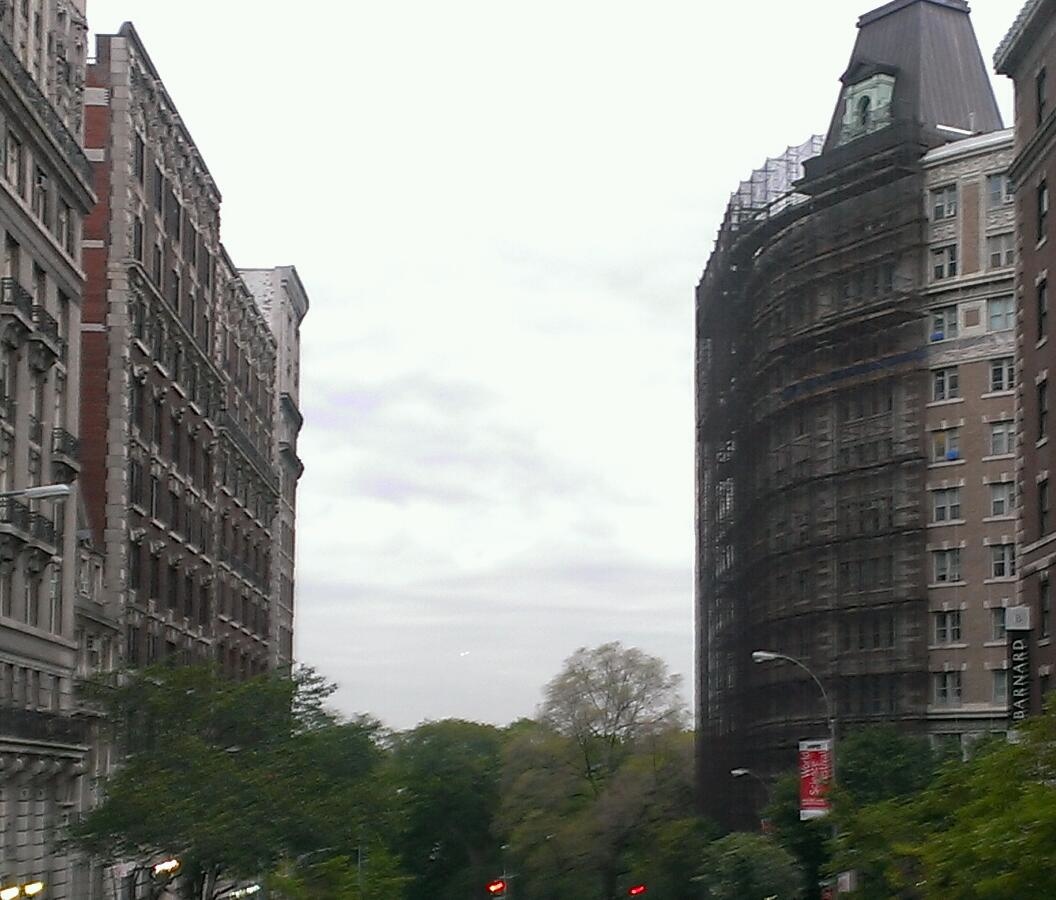Tonight's 'Manhattanhenge' Sunset a Bust, Cloudy Skies Prevail

The magical "Manhattanhenge" sunset, expected to bathe the grid-patterned New York City cross streets in a golden glow, was clouded out tonight (May 29) instead. But there's still a chance for New Yorkers to view the event that turns the city's streets into a Stonehenge-like sundial tomorrow (May 30).
Four times a year the setting sun hits the horizon exactly along Manhattan's street grid, meaning it illuminates the north and south sides of the cross streets. The spectacle happens for two consecutive nights, with a full-sun and half-sun (when half the sun appears below the horizon at the time of sunset). Tomorrow night (May 30), a full-sun Manhattanhenge is expected to grace New York's streets. The next Manhattanhenge of 2014 will occur on July 11 and July 12, with a full-sun and half-sun spectacle, respectively.
Manhattanhenge, coined by astronomer Neil deGrasse Tyson, is named after the English monument Stonehenge; there, the rising sun lines up with some of the vertical stones on the summer solstice. [Gallery: See Photos of Manhattanhenge Sunsets]
Fortunately, there's one more chance before July to see a spectacular Manhattanhenge. Sunset occurs at 8:19 p.m. ET tomorrow night. To experience the full effect, skywatchers should take to Manhattan's streets about 30 minutes before the sun sets to view the glowing orb descend into the city's asphalt canyons. Which streets are best? Tyson suggests heading as far east as possible without losing sight of New Jersey down the avenues, with wide cross streets such as 14th, 23rd, 34th, 42nd and 57th offering the best views. For an extra treat, set up camp on 34th or 42nd Street, where you'll also have a view of the Empire State Building or the Chrysler Building, respectively, notes Tyson in a blog post on the Hayden Planetarium website.
Always remember, however, never to look directly at the sun, through a camera lens or otherwise.
As for why the sun would set in a different spot throughout the year, you can credit Earth's tilted axis. Though the sun sets at due west on the spring and autumn equinoxes, sunset is slightly off of due west at all other times of the year, according to Tyson.
Editor's Note: If you have an amazing Manhattanhenge or general science photo you'd like to share for a possible story or image gallery, please contact managing editor Jeanna Bryner at LSphotos@livescience.com.
Get the world’s most fascinating discoveries delivered straight to your inbox.
Follow Jeanna Bryner on Twitter and Google+. Follow us @livescience, Facebook & Google+. Original article on LiveScience.
Jeanna Bryner is managing editor of Scientific American. Previously she was editor in chief of Live Science and, prior to that, an editor at Scholastic's Science World magazine. Bryner has an English degree from Salisbury University, a master's degree in biogeochemistry and environmental sciences from the University of Maryland and a graduate science journalism degree from New York University. She has worked as a biologist in Florida, where she monitored wetlands and did field surveys for endangered species, including the gorgeous Florida Scrub Jay. She also received an ocean sciences journalism fellowship from the Woods Hole Oceanographic Institution. She is a firm believer that science is for everyone and that just about everything can be viewed through the lens of science.


